While I don’t think it is slanderous to call most, perhaps all, of its cities ugly, Germany’s old industrial heartland of the Ruhrgebiet is still a great place to visit. Mainly for two reasons:
One, the Ruhrgebiet landscapes are nearly always interesting and can, occasionally, be downright idyllic – something that people who only know the Ruhrgebiet from its bad reputation find impossible to believe.
And two, some areas of the local cities have a strangely compelling poetry about them. They are like a sad country song: full of heartbreak and misery, but somehow you find yourself listening over and over again. Bruckhausen in Duisburg is perhaps the best example for this.
Once the City of the Future
When the German director Sönke Wortmann prepared the 2003 shoot for his movie The Miracle of Bern, a story of fathers, sons and the 1954 football world cup, he faced two problems: firstly, he could not find any children who looked sufficiently under-fed to give a credible performance as street kids from the immediate post-war era, and secondly, all of the possible locations he inspected spoke of a certain pride and prosperity: buildings with new roofs and modern windows, freshly painted walls, carefully clipped trees. Simply put, in 60 years of Wirtschaftswunder, the land had become too fat.
I don’t know where Mr. Wortmann eventually found his kids. In the end, he probably took “ordinary” child actors and put them off their Nutella sandwiches for a few months. But for an area with the right degree of dilapidation and post-apocalyptic distress, he and his camera crew chose to come to Bruckhausen.
The skyline of Bruckhausen is very much dominated by the local steel factory. The only products of modern architecture that come close to industrial facilities in their contempt for the human scale are pre-WWII skyscrapers, but they do not share their casual, indifferent brutality.
The best and boldest industrial buildings are, quite simply, sublime. Turner and the Romantics would have loved them.
The rest of Bruckhausen looks like a town very close to the end of its tether. We took our photographs quickly, covertly, not wanting to offend the inhabitants. As it turned out, this was completely unnecessary. Nobody in the streets actually seemed to mind.
What we must remember is this: not so long ago, places like Bruckhausen were the cities of the future – industrious, busy hubs of human activity, cheerful cities with much to be optimistic about.
And why shouldn’t they face tomorrow with a smile? Wouldn’t people always need steel: in ever increasing amounts even, for their cars, airplanes, washing machines and whatever the boffins would invent next? What could possibly go wrong?
Fifty years from now, our own cities with their equally vulnerable industries: banking, retail, “the media” – they never look vulnerable, of course, when they are bestrutting the world – may look as haunted, and tourists from Ecuador and Mongolia will take pictures of barricaded designer outlets, deserted espresso bars and the grey-faced people who still make some sort of living in the shadows of semi-abandoned office buildings.
They will put on a serious face, trying to suppress their smug delight on finding yet another scene of squalor and decay. While we will watch them resentfully, too lethargic to react.
To get to Bruckhausen ( once the city of the future ) from Duisburg central station, take tramway line 903 to Hamborn Rathaus and change to bus number 908 (call at “Thyssen Verwaltung”, just opposite the factory). You can also take line tramway line 901 (to the stop “Matenastraße”, a short walk away).

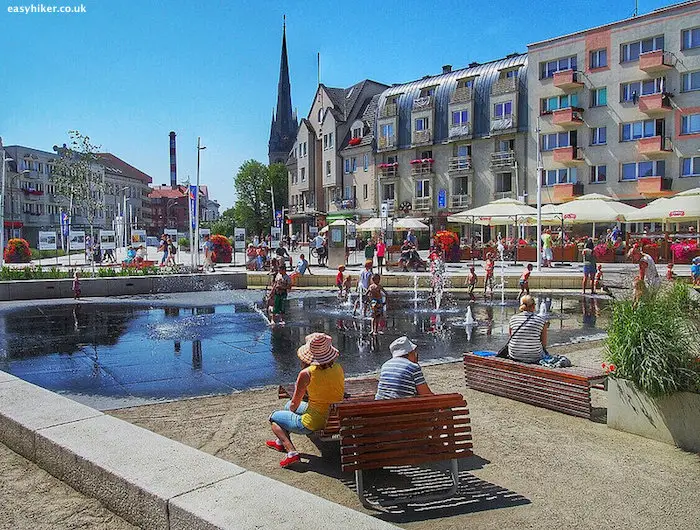

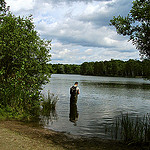
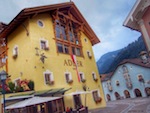
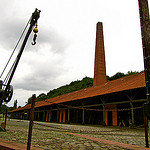
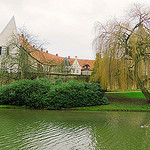
I think you can find beauty in all sorts of places. Interesting point of view!
Wow, you can feel the sense of abandonment and decay in these photos. It must really work the psyche to live in a place that looks so bleak. As I read your post, I thought immediately of Pennsylvania, particularly Pittsburg, and other cities that were steel/industrial towns. Pittsburg has been transforming itself though. I’m sure eventually Bruckhausen will too.
This town looks so deserted and depressing which pretty much describes a lot of American towns too who used to rely on many industrial companies. There’s something haunting and so much abandonment in these pictures. Interesting thought into what some of our cities can become. We really shouldn’t take things for granted.
I’m not really familiar with the place but thru your words and descriptions about it, somehow I was able to dig in the story of the place- an oddly interesting place.
Based from your description and the photos, I think that’s not actually ugly or old. It looks unique for me since I usually see modern cities that are full of buildings and other structures.
Truly eye -opening piece my friend! Forces us all to take a good look around at all of our surroundings! Never heard of this place before but now I have thru your eyes! Thx!
This story reminded me of cities in Pennsylvania that are now bleak for the same reasons, the steel mills shut down. It will be interesting to see what happens to our “cities of the future” in the future.
I liked your comparison to poetry – a very apt description of areas rundown but still with charm. Nicely written post.